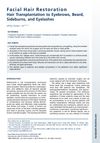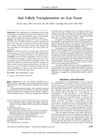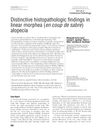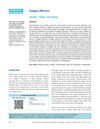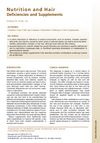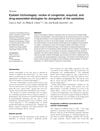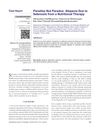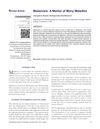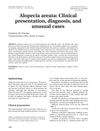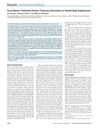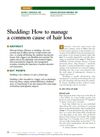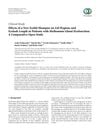Madarosis, Milphosis, Eyelash Trichomegaly, and Dermatochalasis: Conditions Affecting the Periocular Area
February 2015
in “
Clinics in Dermatology
”
madarosis milphosis eyelash trichomegaly dermatochalasis blepharitis dermatitis alopecia areata telogen effluvium trichotillomania endocrinopathies prostaglandins epidermal growth factor receptor inhibitors eyelash loss eyebrow loss excessive eyelash growth excess eyelid skin eyelid inflammation skin inflammation hair loss hair shedding hair-pulling disorder hormonal disorders
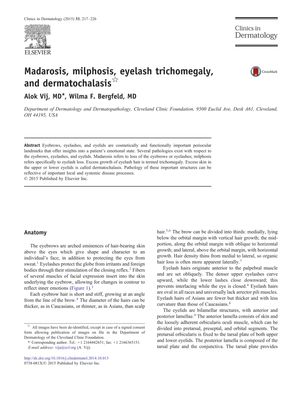
TLDR The document concludes that changes in eyelashes and eyelid skin can indicate various local and systemic diseases.
The document from 2015 examines conditions affecting the periocular area, such as madarosis (loss of eyelashes or eyebrows), milphosis (eyelash loss), trichomegaly (excessive eyelash growth), and dermatochalasis (excess eyelid skin). It outlines the significance of these features for both cosmetic and functional purposes and their potential to signal local and systemic diseases. The paper details the anatomy and protective roles of eyebrows and eyelashes, including variations across ethnicities. It provides a comprehensive differential diagnosis for madarosis, attributing it to ophthalmologic, dermatologic, and systemic diseases, including blepharitis, dermatitis, alopecia areata, telogen effluvium, trichotillomania, endocrinopathies, infections, and neoplastic conditions, as well as certain medications and toxins. Nutritional deficiencies and scarring processes are also mentioned as causes of madarosis. Trichomegaly is discussed as being congenital or acquired, with medications like prostaglandins and epidermal growth factor receptor inhibitors commonly inducing it. Dermatochalasis is primarily associated with aging but can also result from various syndromes or conditions. The document underscores the importance of observing the periocular area for indications of disease.
